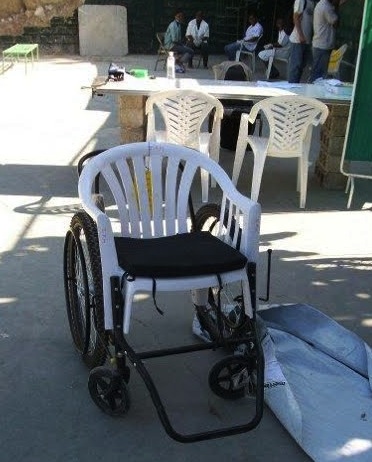Signup or Login
Then click here to access your collection, manage your public profile and join the conversation.
This is how much you have pledged.
Click it to settle up.
This is how much you have left in your bank account.
Click it to add more.

Inverse Internet Operating Manual
Contemporary art is often engaged in reverting everyday things to raw source material, re-engineering them so that they work, but against their 'appropriate' function. Outside of the art world this practice is called kludging, in Brazil, it’s gambiologia, in India, jugaad--it encompasses many methods of actively responding to a scarcity of physical or cultural resources. Inverse Internet Operating Manual considers tactical alternatives to the normative functioning of the Internet, gathering together a diverse set of artists who cannibalize the convoluted, and often compromised, digital frameworks for information consumption.
Image: Kristina Lee Podesva from This is a Vehicle, 2011; thisisavehicle.com; courtesy of the artist.
You can access all of our past shows by becoming an AMP Round 1 Member
Essay By Dena Beard
Honed and perfected in the favelas where resources are scarce, gambiarra refers to the Brazilian cultural practice of creating makeshifts out of available materials. The Indian equivalent is jugaad, a term also used colloquially to identify individuals who can bend the rules and improvise in a crisis. Similarly, hacker culture relies on kludges, or workarounds to maneuver through the power structures of the Internet. Often condemned or recuperated by the market-dependent societies that give rise to them, the constellation of these practices is endless, and critically important. Whether splicing together miles of garden hose to siphon clean water or tunneling through, under, or around digital firewalls, this feral creativity responds to the exigencies of our moment.


Art draws on these same evasive principles to refuse normal social relations. The economic and political circumstances of the 60s and 70s inspired many artists to circumvent the market, creating a host of new models that relied less and less on the creation of physical objects. As such, the artistic practice of circumvention has always tended toward formlessness, favoring transgressions, experiments, and browsing strategies over material objects. In many ways, this sensibility has informed our contemporary understanding of the Internet. Utterly unlike the vertically organized, corporately-owned supercomputers of early science fiction, the World Wide Web is both utopian and dystopian—and, at the same time, utterly banal: a network of amorphous interlopers that continues to casually and enigmatically shift our experience of the status quo.
And because art exists best where it least belongs, this exhibition would argue that thingness—what we expect to find when we enter a museum or gallery—is no longer its primary variable. Art that can be recognized as such has already become cultural currency, or just plain currency, subsumed into the social relations that it works to reject. Similarly, the Internet operates best when it is misused (i.e. Pirate Bay, 4chan, Napster). That the two seem diametrically opposed contributes to the friction, violating the fetishized notion of thingness. How do we look at visual art online? How to do we ascribe value to something that exists only in cyberspace?
This exhibition considers it an implicit fact that the Internet should be free. Contrary to replicating our understanding of everything as actual or potential commercial property, the Internet shows us that what we really, actually, want was and is already available. To reinforce this fact, most of these projects included here are existing websites that can be accessed at anytime. For free. The artists—Anthony Discenza, the Center for Tactical Magic, David Horvitz, Elizabeth Sims, Packard Jennings, Kristina Lee Podesva, and Anna Lundh—refuse the predetermination of the “user-experience” by crowd sourcing, remixing, appropriating, and generally misusing the Internet. For that reason, Inverse Internet Operating Manual is not offered up in exchange for your patronage. In fact, you should feel welcome to steal the downloadable PDFs and distribute them far and wide during the run of the exhibition. But, while doing so, I would encourage that you recognize your tendency towards techno-cannibalism, to foster that tendency, and to consider tactical alternatives to what might be considered a normal browsing experience. Accordingly, we will consider any financial contributions a challenge to the tenets of purchase-based access, affirming the artists’ work towards undermining those ends.
Dena Beard
DENA BEARD is a Curatorial Assistant at the Berkeley Art Museum and Pacific Film Archive (BAM/PFA). For the MATRIX program at BAM/PFA she assists with the production of site-specific projects by national and international emerging artists, including Desirée Holman, Ahmet Ogut, Omer Fast, Futurefarmers, Brent Green, Martha Colburn, Mario Garcia Torres, Trevor Paglen, Tomas Saraceno, and Tris Vonna-Michell, among others. Independently, she curated the Lending Library exhibition series in Oakland and San Francisco, and Taking Up Room on the Floor, a project about dance in virtual and urban space. For the museum, she is working on a mid-career retrospective exhibition with the artist Barry McGee and a MATRIX exhibition of paintings by Silke Otto-Knapp, also featuring performances of Yvonne Rainer's Trio A and site-specific choreography by Flora Wiegmann. She graduated from the School of the Art Institute of Chicago with an M.A. in Art History, Theory, and Criticism.
Participating Artists
Top Earning Project
 Linking Rings/Self Liberation (a poem) by Center for Tactical Magic
Linking Rings/Self Liberation (a poem) by Center for Tactical Magic
Total: $10.00
Donors
3 Anonymous Patrons ($13.00)

